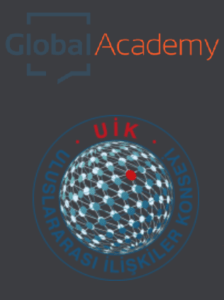
The title unquestionably suggests an exceptionally tall agenda for a short opinion piece. To make the task feasible, the cake will be cut into digestible bites. First, concerning Europe’s world, I will focus exclusively on policymakers’ worldviews, not views of the world held by academics, journalists, or bloggers. Moreover, among policymakers, the focus will be on EU policymakers. Second, concerning the world’s Europe, the focus will be very biased, specifically on images that are on the rise, that is, negative images.
PART I – Europe’s World
Policymakers’ worldview constitutes part of an interpretive framework of ideas and standards that Peter Hall calls a policy paradigm, According to Hall, the “framework is embedded in the very terminology through which policymakers communicate about the work, and it is influential precisely because so much of it is taken for granted and unamenable to scrutiny as a whole” (1993: 279). It is well-known that policymakers often aim at providing reasons for their actions, they try to provide legitimization for their decisions. Hence, given that we are not necessarily in the world of causal flows, we should not a priori assume that policy paradigms determine or find expression in policies. Policy paradigms can be fully decoupled from the programmatic ideas we find in policies, enjoy a life of their own and, still have very important functions. Hence, a policy might fail because ideas embodied in the policy paradigm lack links to programmatic ideas and administrative programmes. Alternatively, a policy might fail not because it lacks institutional or programmatic underpinnings but because it is a wrong policy.
Occasionally, policymakers’ worldview gets noticed. The current EU High Representative, Josep Borrell, talked in October 2022 at the European Diplomatic Academy about Europe being a garden and most of the rest of the world a jungle (that could invade the garden). The images prompted an avalanche of critique. While some opined that Europe is not a garden, others protested the use of the j-word; still others, for instance Jan Eijking, found references to “our civilization” to be historically blind and the entire talk to indicate a European missionary liberal internationalism. However, Borrell’s chosen terminology is strikingly similar to how scholars without much ado teach IR 101 courses, that is, teach about a world characterized by anarchy among nations, power politics and, to quote Thomas Hobbes, a state of nature in which life is said to be “nasty, brutish and short.” If they include reform proposals, they might introduce concepts like legalizing, institutionalizing or domesticating international affairs. Hence, the avalanche of critique might say more about the critics than about the appropriateness of Mr. Borrell’s language.
Instead of paying more attention to a recent speech, a 50 year temporal perspective might be more suitable to illuminate the swings and turns of Europe’s world. While not a representative of anti-americanism in France, Jean-Jacques Servan-Schreiber presented, in La défi Americain (1968), American direct investments in (Western) Europe as a big threat, a precursor to (French) conceptions of globalization as not an opportunity but a threat. In the official Declaration on European Identity, adopted by the European Community’s nine member states a few years later, one finds a veritable tour d’horizon around the world. In the Declaration, each major country receives some remarks, none of them very critical. Likewise, it is stated that the nine member states, “have overcome their past enmities and have decided that unity is a basic European necessity to ensure the survival of the civilization which they have in common.” Moreover, that the Nine, each on their own, lacks international clout, ”International developments and the growing concentration of power and responsibility in the hands of a very small number of great powers mean that Europe must unite and speak increasingly with one voice if it wants to make itself heard and play its proper role in the world.” Finally, the Declaration acknowledges the value of the American nuclear umbrella. In short, the declaration introduced most of the features that for 50 years have characterized Europe’s world.
Move 30 years fast forward, to 2003. The first sentence in the European Security Strategy (ESS) is, “Europe has never been so prosperous, so secure nor so free. The violence of the first half of the 20th Century has given way to a period of peace and stability unprecedented in European history”. In the ESS, policymakers cherished effective multilateralism (Solana 2003), probably using the ‘effective’ to distance themselves from the too many but not always well-known examples of pathological international institutions as highlighted by Barnett and Finnemore (1999). However, the ESS also contains the first joint threat assessment and joint strategic objectives. In hindsight, it proved to be a prudent approach because, five years later, the tide had changed and HR Javier Solana notes how, “twenty years after the Cold War, Europe faces increasingly complex threats and challenges.”
The complex threats and challenges got worse. Centrifugal forces within the EU prompted Brexit and illiberal governments in East Central Europe, thereby producing both a ‘new’ foreign country and non-subscribers to the European enterprise. The Trump Administration arrived in the United States, counting at some point the EU among its enemies. The German Wandel durch Handel with Russia proved to be Handel without Wandel, at least no change to the better. Hence, the EU’s Global Strategy (2016) is introduced by a sentence that stands in stark contrast to the EES, “We live in times of existential crisis, within and beyond the European Union. Our Union is under threat. Our European project, which has brought unprecedented peace, prosperity and democracy, is being questioned.” In addition, HR Federica Mogherini emphasizes how “The Strategy nurtures the ambition of strategic autonomy for the European Union.”
Finally, the EU’s Strategic Compass for Security and Defence was released in March 2022, that is, weeks after Russia’s unprovoked and unjustified full-scale invasion of Ukraine. The Strategic Compass “provides a shared assessment of the strategic environment in which the EU is operating and of the threats and challenges the Union faces.” Concerning the strategic environment, it is the assessment that it has become “more hostile.”
In summary, Europe’s world is a dynamic series of worldviews, reflecting a complex interplay between change and continuity of policymakers’ perceptions of the world, specifically the environment in which Europe is situated. Europe’s world also documents changing identities, that is, policymakers’ ideas about Europe, who we are and what we want to be recognized for.
PART II – The World’s Europe
While Benedict Anderson’s Imagined Communities (1981) predominantly examines self-images of nations, the world’s Europe is only partly a self-image. Most often it is imaginations held by others, situated beyond Europe. Moreover, these imaginations tend to oscillate between ‘Europe’ and the broader category ‘the West’. Given the global turn of perspective from the EU being seen as model example (possessing soft power) to being a contestable Union that represents the anti-thesis to desired illiberal futures, the focus will be on negative representations.
The row over Iraq prompted Timothy Garton Ash (2003) to examine anti-Europeanism in America. He reported how “The current stereotype of Europeans is easily summarized. Europeans are wimps. They are weak, petulant, hypocritical, disunited, duplicitous, sometimes anti-Semitic, and often anti-American appeasers. In a word: “Euroweenies.” He also reports how American attitudes to Europe were fairly similar in the early 1980s and, one might add, during the Trump presidency. Probably, for a secessionist colony such as the United States, anti-Europeanism is bound to be part of the mythology that underpins the founding of the republic. While dormant at times, it seems that the mythology always can be reactivated at short notice. In comparison to Garton Ash, Ian Buruma and Avishai Margalit (2004) focus in their Occidentalism: The West in the Eyes of its Enemies (2004) on the much broader category of occidentalism. The book documents the existence of many varieties of occidentalism around the world and highlights distinct historical trajectories, including some of the origins of occidentalism in Europe. In some cases, geographies prove capable of being home to both orientalist and occidentalist perspectives, cf. The Ottoman Empire/Türkiye hosting both orientalism (see Makdisi 2002; Eldem 2010) and occidentalism (see Ahiska 2003). Civilizational debates in Russia have similar features, characterized as they are by enduring encounters by Westerners and Easterners (Slavophiles). It is the innovative triptych ‘west’-Russia-‘East’ that enables orientalism and occidentalism in one country that simultaneously aspires to be both an empire and a civilization. Occidentalisms in the Arab world display their own distinct features, masterfully analyzed by Robbert Woltering (2011) in “Occidentalisms in the Arab world: ideology and images of the West in the Egyptian media.” Xiaomei Chen’s Occidentalism: A Theory of Counter-Discourse in Post Mao China (1995) takes its readers to representations in literary work and addresses controversial issue, for instance the impact of imperial powers. Chen engages eminently in wonderfully complicated issues, including the relationship between politics and literary work.
Europe’s orientalism is to some extent mirrored by an orientalism in reverse. In that case stereotypes, tropes, and images etched in ontological differences characterize representations of Europe. While Sadiq Jalal al-Azm (1981) offers a critique of the development of orientalism in reverse among intellectuals in the Middle East. One of the founders of the Muslim Brotherhood, Sayyid Qutb (2006) argues that in Middle Eastern countries, one finds a morality that is superior to what one finds in Europe. Orientalism in reverse did not stay in the East, indeed Gilbert Achcar (2008) describes how orientalism in reverse spills-over to segments within French academia.
Subsequently, the idea continued to travel and arrived in other disciplines and fields of study. Indeed, non-Westerners are far from enjoying a monopoly in the production of occidentalism. In the West, it is one of several self-images. While Buruma and Margalit (2004) point to many prominent historical examples, Mario Telo (2007) identifies what he calls “a Spenglerian paradox” in research on the European Union. Telo points, on the one hand, to the EU’s comprehensive contribution to global governance and more, and, on the other hand, he observes how “the largest part of the literature regarding the EU is conditioned by the self-defeating image of Vienna fin de siècle (19th), the Oswald Spengler image of “declining Europe.” During the most recent decade, the paradox seems to become even more pronounced, cf. the contradictions between, on the one hand, dozens of varieties of power Europe studies and, on the other hand, studies highlighting Europe as an international nobody. Diagnoses of the European patient which have an origin in what Razmig Keucheyan’s calls the Left Hemisphere: Mapping Critical Theory Today (2013) might explain part of the self-defeating images. However, outside the literature Telo refers to, it is more ‘the Right Hemisphere’ that sets the agenda, prescribes geopolitical, state-centric studies and politics, thereby aiming at reducing Europe to a geography.

Emeritus Prof. Dr. Knud Erik Jørgensen, Aarhus University
Knud Erik Jørgensen (PhD) is Professor emeritus at Aarhus University. He is a co-editor of the book series Palgrave Studies in International Relations and the European Union in International Affairs. Publications include The Sage Handbook on European Foreign Policy (co-ed 2015); International Relations Theory: A New Introduction (Palgrave 2017); co-edited with Oriol Costa, The Influence of International Institutions on the European Union: When Multilateralism hits Brussels (Palgrave 2012); co-edited with Katie Laatikainen, Handbook on the European Union and International Institutions: Performance, Policy, Power (Routledge 2013). Articles have appeared in European Journal of International Relations, Journal of European Integration, Journal of European Public Policy, Cooperation and Conflict. Recent research activities include the COST Action ENTER Network, the EUNPD Network and EURDIPLO, a research project on the EEAS. His most recent books are What is International Relations? (2021) and The Liberal International Theory Tradition in Europe. (2021). Twitter account: @ke_jorgensen
To cite this work: Knud Erik Jørgensen, “1979 comes after 1989”, Panorama, Online, 03 April 2024, https://www.uikpanorama.com/blog/2024/04/03/europe-world
Copyright@UIKPanorama All on-line and print rights reserved. Opinions expressed in works published by the Panorama belongs to the authors alone unless otherwise stated, and do not imply endorsement by the IRCT, Global Academy, or the Editors/Editorial Board of Panorama.

